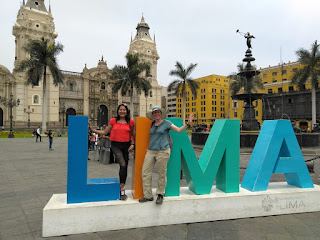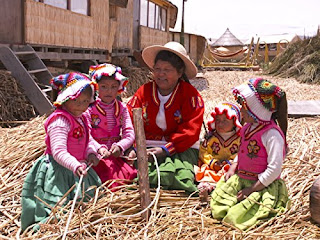NATIONAL POTATO DAY ♥
Every 30th of May, Peru celebrates a very special day honouring one of its most nutritious and varied foods: The potato!
I'll start with the following fact: Did you know Peru has 3,000 potato varieties between the 5,000 types that exist in the world? This post is made to bring awareness about this delicacy, a gift from the pachamama, as the incas would say. Stay here to learn about its health benefits as well as some big heroes.
YAS! There are different shapes, colors, flavors... Some people say that the darker they are on the inside the healthier they are, but the truth is that each color has its own nutrients and specific characteristics.
Funny story!: There was one day when my mom was cooking and she suddenly called me and told me to go to back to the farmers market because she got "bad" potatoes from the vendor, so she showed me and they had the purple color on the inside.. I was not fully convinced that they were actually bad but anyways I went so she can be more sure. I ended up coming back to the house with that same cutted potatoes and finally told my mom that the vendor told me that "THESE ARE THE BEST ONES!", so from that moment she was aware of the huge variety of potatoes that are raised here in Peru. Haha, just for you to know that even we, the peruvians, do not know much about the super foods we have..
You might have seen these, but the truth is that there have been so many exports of our potatoes to other countries, and in order to make it accessible to all they came up with these attractive, crunchy and delicious snacks, that's why some chips may have different colors too.
However it's still a thousands times way better to consume it as a whole, parboiled.
So, when you come to Peru, this is one thing that you just can't skip! Especially when you visit the Andes regions where the farmers market are and also the rural communities, these are the best primary representatives of our delicious super peruvian potatoes, those little / independent farmers that sacrifice their days to protect and make sure there is minimum use of pesticides... But a sad truth is that most of the time the retailers (intermediaries / distributors) end up having most of the income, and there is barely an economical benefit for the amazing farmers.
- They're a source of low-fat energy.
- The main element they have is potassium, which lowers the arterial pressure.
- It prevents malnutrition as it contains a lot of iron and zinc.
- The ones that have an intense-yellow pulp have zeaxanthin, a component that avoids visual degeneration.
- The ones that have a purple-red pulp contain anthyocianin, which prevents illnesses such as cancers.
Meet "The Guardian of Potatoes"
His name is Julio Hancco and lives in the community of Pampacorral in Cusco, 4,200 meters above the sea level. As he says, he was baptized on behalf of the Apu Sahuasiray (a mountain located in Cusco too), being his godfather, so that's why he firmly believes that he has been blessed with the heritage of his parents that was around 90 types of native potatoes for he to take care of and distribute.
He also had an amazing journey by representing his town in different festivals within Cusco, then he also was invited to be well-recognized in Lima. Because of all these events he decided to get more kinds of potatoes to raise in his hometown, having now around 480 of them, and thanks to it he is able to educate his kids.
Finally, he even went to a festival in Italy along with Moises Quispe, as he tells in his native language quechua, he brought 80 boxes of potato chips there but as "it was too low" all the income was given to Moises. However he remains so happy for that experience where he learned so much.
He even has a special participation in the movie: Opening the Earth, the Potato King Documentary.
In Apurimac region the producers make sure that the potato is 100% free from pesticides
They only authorized typical solutions made with ressources from their place, like natural fertilizer as well as a mix of red chilli and water to exterminate all insects.
Besides this, they also practice a method called Positive Selection, which consists on picking the kinds of potatoes that are more resistant to the frosts as well as extreme weathers so their seeds can be better raised. In order to make sure these methods are properly achieved there's a yachachiq, a quechua word that means "the one who guides and teaches", which is the most experienced person, of course.
Besides this, they also practice a method called Positive Selection, which consists on picking the kinds of potatoes that are more resistant to the frosts as well as extreme weathers so their seeds can be better raised. In order to make sure these methods are properly achieved there's a yachachiq, a quechua word that means "the one who guides and teaches", which is the most experienced person, of course.
Now we know, Peru not only has a huge amount of potato types, but the producers, the people behind those nice chips and popularity around the world actually dedicate a lot of hours or whole days to protect and raise these foods so they can be delivered at the healthiest way. And yes, as things seem pretty unfair for them, the best we can do is
EAT LOCAL.
As we said before, next time you come, be ready to eat at the local farmers market and try to visit as much those little rural communities, and experience doing their farming job.It's a win - win ♥
Thank you for reading
.
Kusikuy Travel Team










Comments
Post a Comment